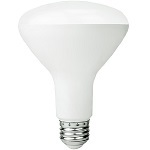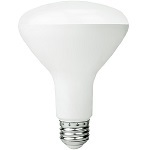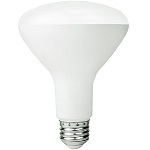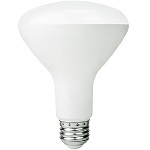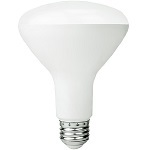BR30 LED Light Bulbs
Color Temperature of LED R30 and BR30 Bulbs
These LED BR30 bulbs are a replacement for incandescent and CFL reflector bulbs and are available in a range of color temperatures, which affects how warm or cool a space looks. The lower the Kelvin (K) number, the warmer (more yellow or orange) the light output; the higher the number, the more blue the light looks. If you're trying to match the look of incandescent bulbs, the 2700K category is the closest. For a brighter white or task lighting applications, consider 4000K and above. You can see how the different Kelvin temperatures look in a kitchen using our interactive Lighting Guide.
Where to use LED BR30 and R30 Bulbs
Because LEDs are naturally directional, they don't have the extra internal reflector that their predecessors used to push additional light outward. They are commonly used in track lighting, recessed can lights, and as outdoor flood lights if they are wet-location rated. While BR20 bulbs are likely to have a narrower beam angle, the BR30 bulbs offer more versatility. Commonly, BR30s have a 120-degree beam angle, but you can find spot lights available without having to switch to a smaller sized bulb. With the broad beam spread, LED BR30 bulbs are a good choice for wall washing or wall grazing techniques. Wall washing spreads the light uniformly along the whole wall from top to bottom for an even illumination. It's a popular technique for art galleries and museums. Wall grazing is used to accentuate textured surfaces. It creates exaggerated and pronounced shadows on stone columns, brick, and other surfaces to give the space a more dramatic look.
Depending on your application, you may want bulbs with a high color rendering index (CRI). This means the LED is better at bringing out the true colors of an object and is most noticeable on reds and skin tones. For example, you may want to use high CRI BR30 bulbs in track lighting for a wall of artwork, but wouldn't need it when wall grazing stonework.

